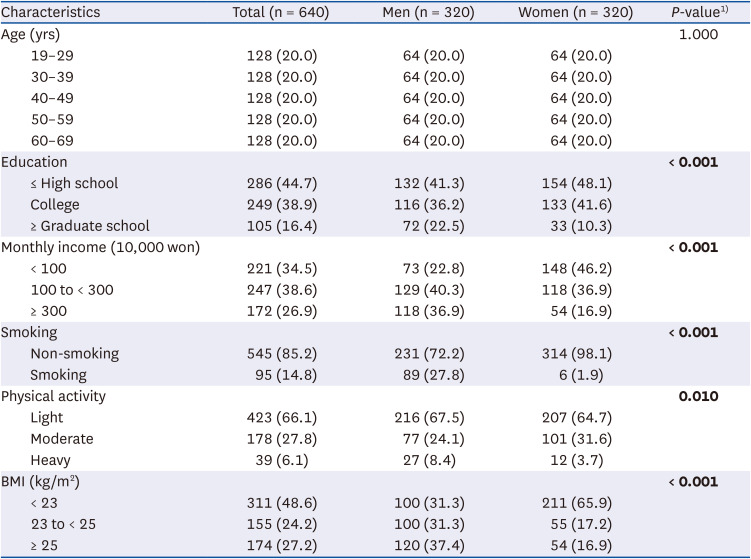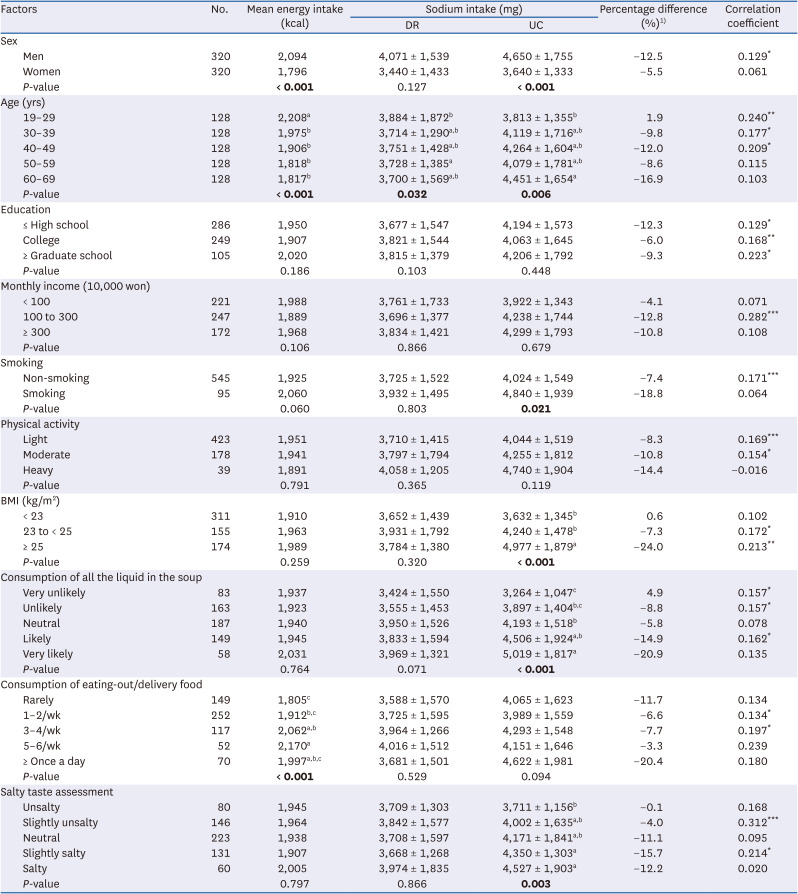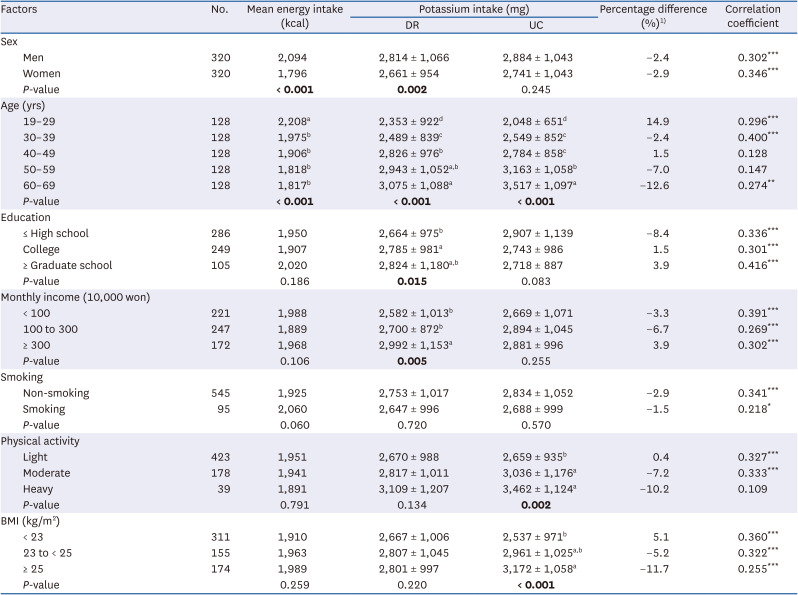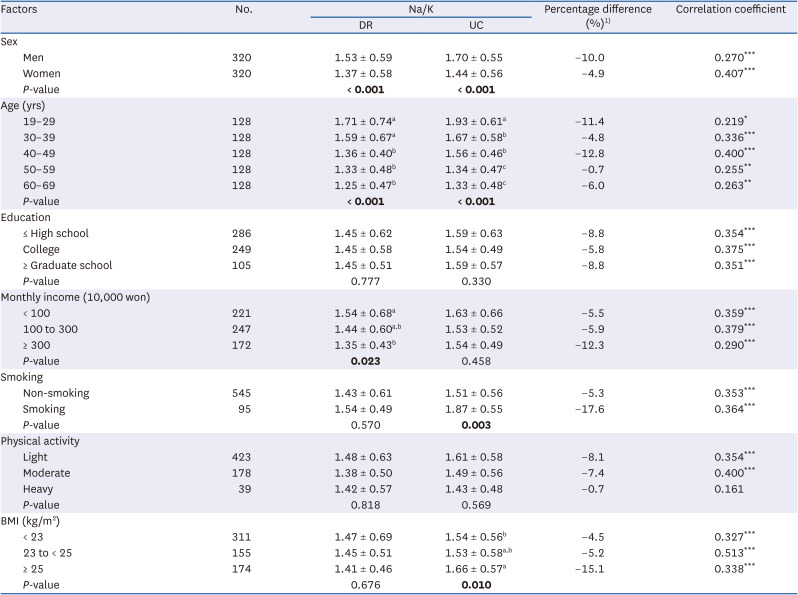1. Whelton PK. Sodium, potassium, blood pressure, and cardiovascular disease in humans. Curr Hypertens Rep. 2014; 16:465. PMID:
24924995.
2. Ozemek C, Laddu DR, Arena R, Lavie CJ. The role of diet for prevention and management of hypertension. Curr Opin Cardiol. 2018; 33:388–393. PMID:
29771736.
3. Fuchs FD, Whelton PK. High blood pressure and cardiovascular disease. Hypertension. 2020; 75:285–292. PMID:
31865786.
4. Pistoia F, Sacco S, Degan D, Tiseo C, Ornello R, Carolei A. Hypertension and stroke: epidemiological aspects and clinical evaluation. High Blood Press Cardiovasc Prev. 2016; 23:9–18. PMID:
26159677.
5. Barri YM. Hypertension and kidney disease: a deadly connection. Curr Hypertens Rep. 2008; 10:39–45. PMID:
18367025.
6. Turana Y, Tengkawan J, Chia YC, Hoshide S, Shin J, Chen CH, Buranakitjaroen P, Nailes J, Park S, Siddique S, et al. Hypertension and dementia: a comprehensive review from the HOPE Asia Network. J Clin Hypertens (Greenwich). 2019; 21:1091–1098. PMID:
31131972.
7. GBD 2017 Diet Collaborators. Health effects of dietary risks in 195 countries, 1990-2017: a systematic analysis for the Global Burden of Disease Study 2017. Lancet. 2019; 393:1958–1972. PMID:
30954305.
8. McLean RM. Measuring population sodium intake: a review of methods. Nutrients. 2014; 6:4651–4662. PMID:
25353661.
9. Ginos BN, Engberink RH. Estimation of sodium and potassium intake: current limitations and future perspectives. Nutrients. 2020; 12:3275. PMID:
33114577.
10. McLean RM, Farmer VL, Nettleton A, Cameron CM, Cook NR, Woodward M, Campbell NRC. TRUE Consortium (in Ternational Consortium for Quality Research on Dietary Sodium/Salt). Twenty-four-hour diet recall and diet records compared with 24-hour urinary excretion to predict an individual’s sodium consumption: a systematic review. J Clin Hypertens (Greenwich). 2018; 20:1360–1376. PMID:
30298972.
11. Rhodes DG, Murayi T, Clemens JC, Baer DJ, Sebastian RS, Moshfegh AJ. The USDA Automated Multiple-Pass Method accurately assesses population sodium intakes. Am J Clin Nutr. 2013; 97:958–964. PMID:
23553153.
12. Ma Y, He FJ, MacGregor GA. High salt intake: independent risk factor for obesity? Hypertension. 2015; 66:843–849. PMID:
26238447.
13. Murakami K, Livingstone MB, Sasaki S, Uenishi K. Japan Dietetic Students’ Study for Nutrition and Biomarkers Group. Ability of self-reported estimates of dietary sodium, potassium and protein to detect an association with general and abdominal obesity: comparison with the estimates derived from 24 h urinary excretion. Br J Nutr. 2015; 113:1308–1318. PMID:
25782331.
14. Zhou L, Stamler J, Chan Q, Van Horn L, Daviglus ML, Dyer AR, Miura K, Okuda N, Wu Y, Ueshima H, et al. Salt intake and prevalence of overweight/obesity in Japan, China, the United Kingdom, and the United States: the INTERMAP Study. Am J Clin Nutr. 2019; 110:34–40. PMID:
31111867.
15. Song HJ, Cho YG, Lee HJ. Dietary sodium intake and prevalence of overweight in adults. Metabolism. 2013; 62:703–708. PMID:
23357528.
16. Hong JW, Noh JH, Kim DJ. Factors associated with high sodium intake based on estimated 24-hour urinary sodium excretion: the 2009-2011 Korea National Health and Nutrition Examination Survey. Medicine (Baltimore). 2016; 95:e2864. PMID:
26945369.
17. Hashimoto T, Yagami F, Owada M, Sugawara T, Kawamura M. Salt preference according to a questionnaire vs. dietary salt intake estimated by a spot urine method in participants at a health check-up center. Intern Med. 2008; 47:399–403. PMID:
18310970.
18. Otsuka T, Kato K, Ibuki C, Kodani E, Kusama Y, Kawada T. Subjective evaluation of the frequency of salty food intake and its relationship to urinary sodium excretion and blood pressure in a middle-aged population. Environ Health Prev Med. 2013; 18:330–334. PMID:
23233242.
19. Lim H. A study on the sodium and potassium intakes and urinary excretion of adults in Busan. Korean J Community Nutr. 2012; 17:737–751.
20. Kim S, Chung S. Validity of estimating sodium intake using a mobile phone application of 24-hour dietary recall with meal photos. Korean J Community Nutr. 2020; 25:317–328.
21. Jeong Y, Lim H, Kim S, Kim HJ, Son SM. Blood pressure and dietary related risk factors associated with high sodium intake assessed with 24-hour urine analysis for Korean adults. Korean J Community Nutr. 2014; 19:537–549.
22. Lee WJ, Kim HC, Oh SM, Choi DP, Cho J, Suh I. Factors associated with a low-sodium diet: the fourth Korean National Health and Nutrition Examination Survey. Epidemiol Health. 2013; 35:e2013005. PMID:
23807908.
23. Shin E, Lee H, Ahn M, Lee Y. Study on the development and evaluation of validity of salty taste assessment tool. Korean J Nutr. 2008; 41:184–191.
24. World Health Organization, Western Pacific Region. The Asia-Pacific Perspective: Refining Obesity and its Treatment. Sydney: Health Communication Australia;2000.
25. Nam GE, Kim SM, Choi MK, Heo YR, Hyun TS, Lyu ES, Oh SY, Park HR, Ro HK, Han K, et al. Association between 24-h urinary sodium excretion and obesity in Korean adults: a multicenter study. Nutrition. 2017; 41:113–119. PMID:
28760420.
26. Holbrook JT, Patterson KY, Bodner JE, Douglas LW, Veillon C, Kelsay JL, Mertz W, Smith JC Jr. Sodium and potassium intake and balance in adults consuming self-selected diets. Am J Clin Nutr. 1984; 40:786–793. PMID:
6486085.
27. Ministry of Health and Welfare, Korea Disease Control and Prevention Agency. Korea Health Statistics 2020. Korea National Health and Nutrition Examination Survey (KNHANES VII-2). Cheongju: Korea Disease Control and Prevention Agency;2021.
28. Rhee MY, Shin SJ, Park SH, Kim SW. Sodium intake of a city population in Korea estimated by 24-h urine collection method. Eur J Clin Nutr. 2013; 67:875–880. PMID:
23632748.
29. McLean R, Cameron C, Butcher E, Cook NR, Woodward M, Campbell NR. Comparison of 24-hour urine and 24-hour diet recall for estimating dietary sodium intake in populations: a systematic review and meta-analysis. J Clin Hypertens (Greenwich). 2019; 21:1753–1762. PMID:
31769168.
30. Wen X, Zhou L, Stamler J, Chan Q, Van Horn L, Daviglus ML, Dyer AR, Elliott P, Ueshima H, Miura K, et al. Agreement between 24-h dietary recalls and 24-h urine collections for estimating sodium intake in China, Japan, UK, USA: the International Study of Macro- and Micro-nutrients and Blood Pressure. J Hypertens. 2019; 37:814–819. PMID:
30817463.
31. Bailey RL, Parker EA, Rhodes DG, Goldman JD, Clemens JC, Moshfegh AJ, Thuppal SV, Weaver CM. Estimating sodium and potassium intakes and their ratio in the American diet: data from the 2011–2012 NHANES. J Nutr. 2015; 146:745–750. PMID:
26962185.
32. Bae Y. Relationship among practicing healthy diet and metabolic syndrome indicators in adults-from the Korea National Health and Nutrition Examination Survey, 2013~ 2014. J Nutr Health. 2016; 49:459–470.
33. Adams J, Goffe L, Brown T, Lake AA, Summerbell C, White M, Wrieden W, Adamson AJ. Frequency and socio-demographic correlates of eating meals out and take-away meals at home: cross-sectional analysis of the UK national diet and nutrition survey, waves 1-4 (2008-12). Int J Behav Nutr Phys Act. 2015; 12:51. PMID:
25889159.
34. Sugiura T, Takase H, Ohte N, Dohi Y. Dietary salt intake increases with age in Japanese adults. Nutr Res. 2021; 89:1–9. PMID:
33866192.
35. Turin TC, Okuda N, Miura K, Nakamura Y, Rumana N, Ueshima H. NIPPON DATA80/90 Research Group. Dietary intake of potassium and associated dietary factors among representative samples of Japanese general population: NIPPON DATA 80/90. J Epidemiol. 2010; 20:S567–S575. PMID:
20351479.
36. Yamashita M, Tabara Y, Higo Y, Setoh K, Kawaguchi T, Takahashi Y, Kosugi S, Nakayama T, Matsuda F, Wakamura T. Nagahama Study group. Association between socioeconomic factors and urinary sodium-to-potassium ratio: the Nagahama Study. Hypertens Res. 2018; 41:973–980. PMID:
30218050.
37. Lampuré A, Schlich P, Deglaire A, Castetbon K, Péneau S, Hercberg S, Méjean C. Sociodemographic, psychological, and lifestyle characteristics are associated with a liking for salty and sweet tastes in French adults. J Nutr. 2015; 145:587–594. PMID:
25733476.
38. Park NY. Association of smoking with salt taste preference, sodium intake, and the risk of metabolic syndrome in Korean men: a community-based longitudinal study (2001~2010) [master’s thesis]. Cheongju: Chungbuk National University;2015.
39. Pryer JA, Vrijheid M, Nichols R, Kiggins M, Elliott P. Who are the ‘low energy reporters’ in the dietary and nutritional survey of British adults? Int J Epidemiol. 1997; 26:146–154. PMID:
9126514.
40. Johansson L, Solvoll K, Bjørneboe GE, Drevon CA. Under- and overreporting of energy intake related to weight status and lifestyle in a nationwide sample. Am J Clin Nutr. 1998; 68:266–274. PMID:
9701182.
41. Okuda M, Asakura K, Sasaki S, Shinozaki K. Twenty-four-hour urinary sodium and potassium excretion and associated factors in Japanese secondary school students. Hypertens Res. 2016; 39:524–529. PMID:
26935040.
42. Cox DN, Perry L, Moore PB, Vallis L, Mela DJ. Sensory and hedonic associations with macronutrient and energy intakes of lean and obese consumers. Int J Obes. 1999; 23:403–410.
43. Donaldson LF, Bennett L, Baic S, Melichar JK. Taste and weight: is there a link? Am J Clin Nutr. 2009; 90:800S–803S. PMID:
19571216.
44. Yon M, Lee Y, Kim D, Lee J, Koh E, Nam E, Shin H, Kang B, Kim JW, Heo S, et al. Major sources of sodium intake of the Korean population at prepared dish level-based on the KNHANES 2008 & 2009. Korean J Community Nutr. 2011; 16:473–487.









 PDF
PDF Citation
Citation Print
Print



 XML Download
XML Download